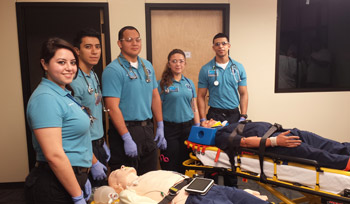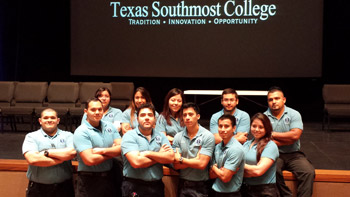|
The mission of the Emergency Medical Science Program reflects the mission of Texas Southmost College, the Division of Health Care Career and Technical Education with its commitment to serving the educational needs of the citizens of the Lower Rio Grande Valley.
The Emergency Medical Science Program will provide innovative, dynamic, and high quality EMS education with the intent of producing professional and proficient EMT and Paramedic certified providers. This will be accomplished by providing enthusiastic students with high quality instruction, employable skills, and preparing the graduate to be successful on the National Registry Examination of Emergency Medical Technicians. The program’s mission is supported by a caring team of educational faculty, healthcare providers, and physicians with expertise in various aspects of emergency medicine and a commitment to education. An extensive array of didactic resources and a wide variety of advanced practicum experiences will provide graduates with the skills and versatility needed to function in a diverse health care environment. The program will be conscientious to health-care needs and educational requirements.
Goals
- Integrates a comprehensive understanding of the anatomy and physiology of all human systems. (Departmental Goal 3) (College Goal 2)
- Integrates comprehensive anatomical and medical terminology and abbreviations into the written and oral communication with colleagues and other health-care professionals. (Departmental Goal 2) (College Goal 2)
- Integrates a comprehensive understanding of pathophysiology of major human systems. (Departmental Goals 3 and 5) (College Goal 2)
- Integrates a comprehensive understanding of life span development. (Departmental Goals 3 and 5) (College Goal 2)
- Applies a fundamental understanding of principles of public health and epidemiology including: health promotion, and illness and injury prevention. (Departmental Goal 4) (College Goal 2)
- Integrates a comprehensive understanding of pharmacology to formulate a treatment plan intended to mitigate emergencies and improve the overall health of the patient. (Departmental Goals 5 and 10) (College Goal 2)
- Integrates a complex understanding of anatomy, physiology, and pathophysiology into the assessment to develop and implement a treatment plan with the goal of assuring a patent airway, adequate mechanical ventilation, and respiration for patients of all ages. (Departmental Goals 2, 5, and 10) (College Goals 1 and 2)
- Integrates scene and patient assessment findings with an understanding of epidemiology and pathophysiology to form a field impression. This includes developing a list of differential diagnoses through clinical reasoning to modify the assessment and formulate a treatment plan. (Departmental Goals 2, 5, and 10) (College Goal 2)
- Integrates assessment findings with principles of epidemiology and pathophysiology to formulate a field impression and implement a comprehensive treatment and disposition plan for a patient with a medical complaint. (Departmental Goals 2, 5, and 10) (College Goal 2)
- Integrates a comprehensive knowledge of causes and pathophysiology into the management of cardiac arrest and peri-arrest states. Integrates a comprehensive knowledge of the causes, pathophysiology into the management of shock, respiratory failure or arrest with an emphasis on early intervention to prevent arrest. (Departmental Goals 2, 5, and 10) (College Goal 2)
- Integrates assessment findings with principles of epidemiology and pathophysiology to formulate a field impression to implement a comprehensive treatment and disposition plan for an acutely injured patient. (Departmental Goals 2, 5, and 10) (College Goal 2)
- Integrates assessment findings with principles of pathophysiology and knowledge of psychosocial needs to formulate a field impression and implement a comprehensive treatment and disposition plan for patients with special needs. (DepartmentalGoals 2, 5, and 10) (College Goal 2)
- Applies a fundamental knowledge of operational roles and responsibilities to ensure safe and effective response, scene management, and transport. (Departmental Goals 2 and 10) (College Goal 2)
|
|
Last Updated on Thursday, 28 April 2016 10:54 |





